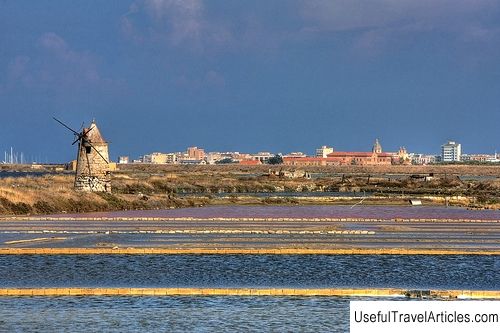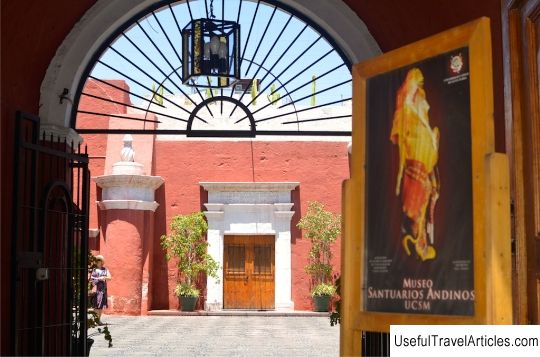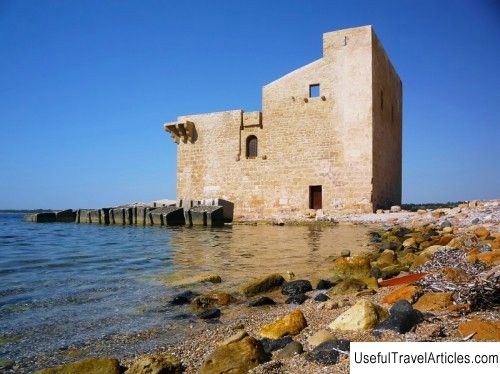Ancient salt fields of Sicily (Sicily's salt pans) description and photos - Italy: Island of Sicily
Rating: 8,9/10 (655 votes) 
Ancient salt fields of Sicily (Sicily's salt pans) description and photos - Italy: Sicily Island. Detailed information about the attraction. Description, photographs and a map showing the nearest significant objects. The title in English is Sicily's salt pans. Photo and descriptionThe ancient salt fields of Sicily are an area that includes the Stagnone Archipelago Nature Reserve with an area of 2,000 hectares and the Trapani and Pacheco salt lakes. There are many lagoons and low-lying marches with stagnant water from 50 cm to 2 meters deep. The archipelago consists of 4 islands - San Pantaleo (Mozia), Isola Grande, Scola and Santa Maria, and is administratively subordinate to Marsala. And the coastal strip near Pacheco between Torre Nubia and Salina Grande belongs to the province of Trapani. The lagoons were formed as a result of underwater currents that provoked the movement of sand, relatively recently - during the Phoenician colonization of Mozia, they did not exist yet. Water access to the lagoons was very scarce, which caused the water to stagnate and its temperature rose. That is why salt began to be mined here - production in some places does not stop to this day. The method of salt extraction was very simple: seawater was fed into small ponds through specially built canals, which dried up in the sun, and all that remained was to collect the resulting salt. Water was supplied using windmills, some of which can be seen today - they have been restored. Salt was extremely important for food storage processes, which is why the west coast of Sicily with its salt mines played a key role in the daily life of people throughout Europe. Salt production reached its peak immediately after the unification of Italy in 1860 - then 31 salt works produced over 100 thousand tons of salt annually. It was exported throughout Europe and even to Russia. On the way from Trapani to Marsala there is the Mulino Maria Stella mill, where you can get information about the Stagnone Archipelago nature reserve. The main attraction of the protected area is the flocks of migratory birds such as herons and flamingos that stop here on their way to Africa. In addition, in the reserve you can visit the ancient windmills (by prior arrangement), the Salt Museum near the village of Torre Nubia and the ruins and necropolis of the island of Mozia, where the ancient Phoenician city was once located. There are also the remains of an old aircraft hangar, which was used during the Second World War.       We also recommend reading Town hall tower description and photo - Russia - Leningrad region: Vyborg Topic: Ancient salt fields of Sicily (Sicily's salt pans) description and photos - Italy: Island of Sicily. |




